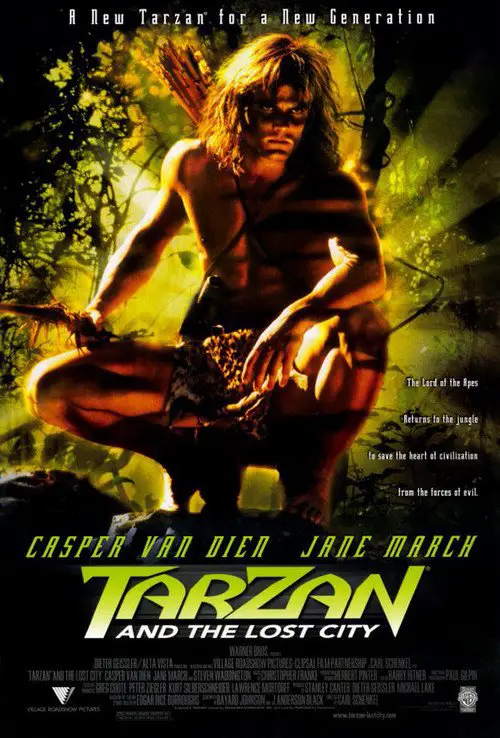

This is a ropey and dull rehashing of Edgar Rice Burroughs’s creation, with Alexander Skarsgård giving us his rock-hard abs and an equally immobile performance in the lead role. Now it looks like it’s been remade again with all the songs removed and also the fun, excitement and charm. The Legend of Tarzan is in theaters this Friday, July 1.Earlier this year, The Jungle Book was remade with most of the songs removed. Those dusty old paperbacks may thrill the occasional curious soul, but they’ll never make it back to the best seller list. Like John Carter and the Lone Ranger – fictional heroes who have almost no modern relevance – Tarzan should go back on the shelf. That’s likely because no one involved probably even knew why they were making the picture or who they were making it for. In fact, no one involved with The Legend of Tarzan, from the cast to the director to the people who programmed those awful CG animals, seems very excited about it. The screenwriters really don’t know what to do except fall back on the usual blockbuster tropes, and Yates – who rarely elevated his four Harry Potter films beyond a faithful slog through the text – shows little inspiration here in his staging of the action, his compositions or the film’s humorless tone. This all leads to what is supposed to be a grand climax featuring tribal warriors, gorillas, Rom’s army of mercenaries and our hero (not to mention some man-eating alligators for good measure), but by then you’ve lost all interest in how the machinations of the plot play out. When Yates cuts to a pointless wrestling match between Skarsgard and a digital gorilla it’s almost a relief. That boat ride, by the way, aboard Rom’s private craft as it makes its way downriver with Tarzan and Williams in pursuit, couldn’t move slower if Rom had the natives get out and push.

Miscast, she’s given little to do except glower at Waltz. I’ve heard others say that Robbie is not a “damsel in distress” in this movie, an odd observation considering that she’s handcuffed to a boat for half the running time and in need of rescue. Tarzan is an all-purpose superhero here, and Skarsgard’s bland, non-verbal performance doesn’t help matters. We don’t even get to see him stumble, make mistakes, push himself too fast too soon – anything that would create some drama for the character. But within minutes, he is up and running and swinging through the jungle as if he had left for a weekend instead of many years. After Tarzan, Jane and their party arrive in Congo, they are attacked by Rom’s men, who kidnap Jane and leave Tarzan momentarily out of commission. The Legend of Tarzan, however, only plays fleeting lip service to that. There is a potentially fascinating story to tell here of a man who struggles to repress his true nature to fit into “proper” society, and how he must reclaim his real self in order to survive. Where the film (and the screenplay by Adam Cozad and Craig Brewer) fails even more egregiously is in its development of Tarzan himself. But both actors rely more on their usual tricks instead of breathing any real life into the characters, with the mannered Waltz in particular needing a long vacation from bad guys. Jackson), the African-American writer whose actual journey to Congo – where he exposed Leopold’s horrific mistreatment of the population there – is woven into this story. There’s also some novelty in incorporating real historical figures into the story, such as Rom himself (who was by all accounts a nasty piece of work) and George Washington Williams (portrayed with his patented combination of snark and indifference by Samuel L. The idea of Tarzan being a media personality of his age (as far as it goes) is an interesting one, and there’s even a moment where Waltz riffs on the “me Tarzan, you Jane” cliché.


 0 kommentar(er)
0 kommentar(er)
